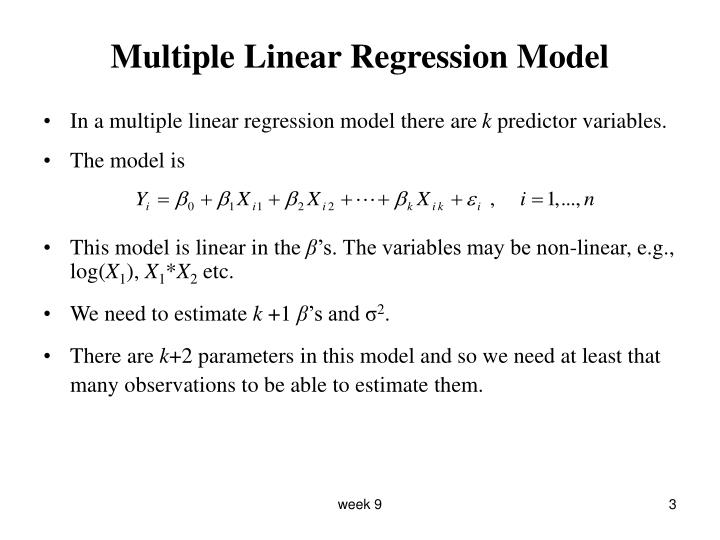
When working with multiple independent variables, we’re still trying to find a relationship between features and the target variables. Once we calculate the regression coefficients, slope and intercept, we can replace X with a random value to get Y.

Because we can’t expect the model to predict the correct value, we can only estimate the predictions. What do those carrots above each variable mean? That means you’re using a “hat” notation which stands for estimations.

We have data points that pertain to something in which we plot the independent variable on the X-axis and the dependent variable on the Y-axis. Let’s start off with simple linear regression since that’s the easiest to start with. Multiple Linear Regression: uses multiple features to model a linear relationship with a target variable Simple Linear Regression Simple Linear Regression: single feature to model a linear relationship with a target variable Regression: statistical method used to understand the relationships between variables

Independent Variable (features): data that is standalone and cannot be controlled directly, has direct effect on the dependent variableĭependent Variables (target): data that is controlled directly, directly affected by the independent variablesĮxample: income (independent) depends on other features (dependent) such as education level, age, marriage status What is Regression? To give an example, based on certain house features (predictors) such as number of bedrooms and total square feet, we can predict house prices (target)! Types of Variables By finding the relationship between the predictors and target variables, we can predict a target value. Based on Supervised Learning, a linear regression attempts to model the linear relationship between one or more predictor variables and a continuous target variable. Linear Regression is a Machine Learning algorithm.


 0 kommentar(er)
0 kommentar(er)
